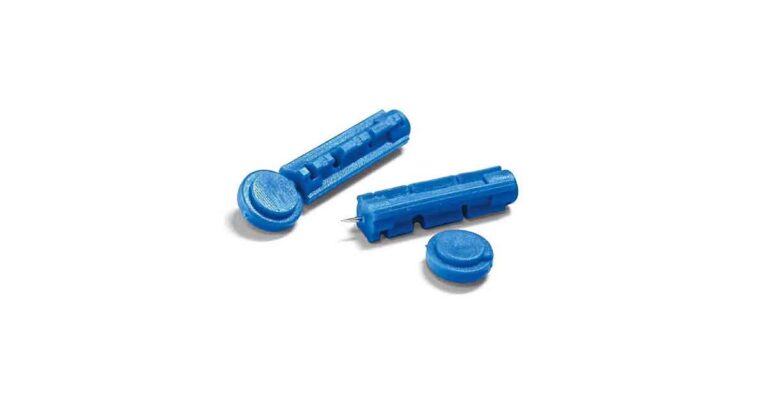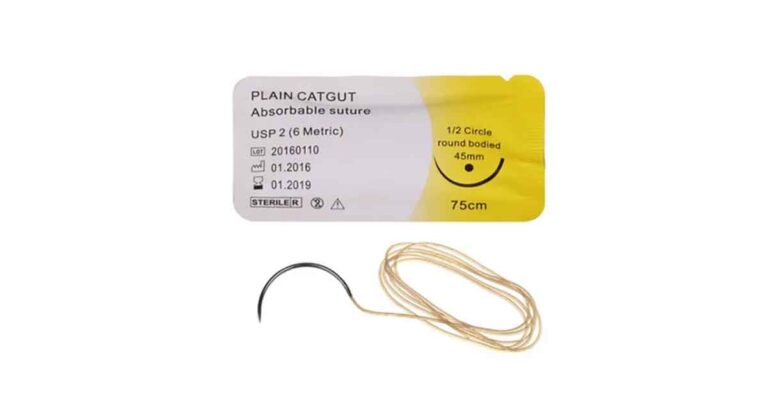Urinary catheters are medical devices that help to empty the bladder in patients experiencing urinary incontinence and retention and are unable to pass out urine normally. Different types of catheters are made from materials such as latex, and silicon. Each material has its own pros and cons, with the silicon catheter types having firmer material than the latex.
Latex Catheters
Latex catheter are made from 100% latex and are soft and flexible. They are also thermo-sensitive, which means they adapt to the temperature of the environment. Latex types are also cuffed with sterile water.
The latex material is used in both Foley and intermittent catheters.
Latex catheters are coated with a protective layer to reduce irritation. The coating material could be a thin layer of silicone or teflon, to prevent tissue irritation from the latex. Some coating also releases antimicrobial agents like silver ions, chlorhexidine or antibiotics, giving short-term antimicrobial protection to the patient.
It has the advantage of being thermo-sensitive and flexible, reducing discomfort during insertion. However, it can cause allergies in some sensitive people.
This allergic reaction is the main reason to chose silicon catheter in some individuals.
Silicon Catheters
Silicon catheters are made of 100% silicon, are hypoallergenic, and are more user-friendly. They are sterile and inert to reduce irritation, especially during the prolonged use of indwelling catheters.
Since they do not contain latex, they are suitable for patients with latex allergies or sensitivity.
This type of catheter works in similar way like other Foley catheters. The tip is inserted into the urethra till it gets to the bladder. The eyelets, which are small openings on the tip allows urine to flow through the catheter and collect outside the body in the drainage bag.
The insertion method of silicon catheter and other material types are similar, but silicon types need lubrication to help in insertion, unlike hydrophilic catheters, which are pre-lubricated.
Main Advantages of Silicon Catheter over Latex Catheters
Silicon catheter does not cause allergy and skin sensitivity unlike the latex catheters. It is also softer and reduce discomfort in with clean intermittent self-catheterization.
The material is smooth, more tissue friendly, and flexible, ensuring smooth insertion and less irritation to the urethra. The lumen also tends to be wider while maintaining the same size for the outer diameter, improving urinary drainage.
Disadvantages
However, there are disadvantages of silicon catheter which include causing of “cuffing” to the balloon, making it difficult to remove. The flexibility of the catheter can also cause problems with intermittent self-catheterization, as it may require more precision during the insertion. It may also be too stiff in some people. There is also the risk of developing collar when deflated.
Types of Silicon Catheters
Silicon catheter comes in different types and shapes. They are Foley, intermittent, and coude tip catheters.
The foley catheter, also called indwelling catheter is inserted the same way as intermittent catheters but can be left in place for a period of time. They are kept in place by a water-filled balloon. These types can be two-way foley catheter or three-way foley catheter.
Two-Way Foley Catheter: the most common type. It has two ports, one for inflating the balloon, and the other for passing out of the urine through the drainage bag.
Three-Way Foley Catheter: this type of silicon catheter has three ports. One is used to inflate the balloon, the other port allows for the drainage of urine from the body, while the third one is used to flush the catheter clean.
The intermittent catheters are designed for single use and after emptying the bladder are discarded. This is to avoid infection. These types of catheters are needed for a few weeks or a few months.
References
- https://www.hcd.com/need-medical-supplies/100-silicone-catheter/#:~:text=The%20100%25%20Silicone%20catheter%20is,intermittent%2C%20and%20coude%20tip%20catheters.
- https://www.byramhealthcare.com/blogs/silicone-vs-latex-catheters-pros-and-cons
- https://www.bactiguard.com/education/which-catheter-to-choose/











